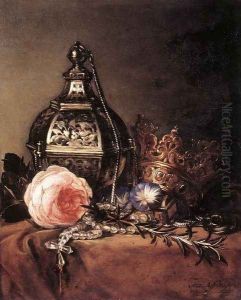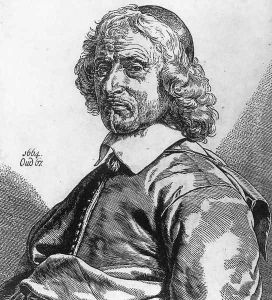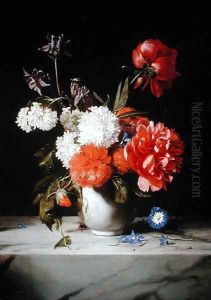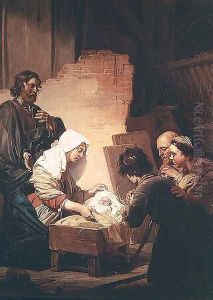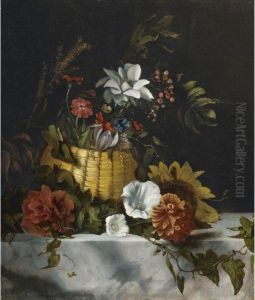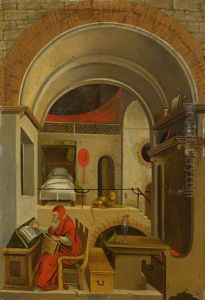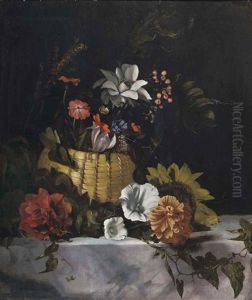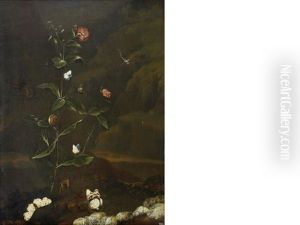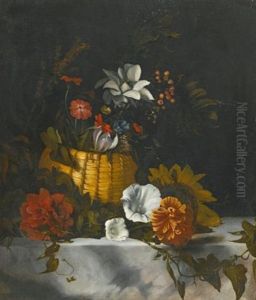Dirck de Bray Paintings
Dirck de Bray was a Dutch artist known for his contributions to the Baroque period, particularly in the realm of still-life painting. Born in 1635 in Haarlem, Netherlands, de Bray grew up in a time when Dutch art was experiencing a golden age, characterized by a remarkable output in quality and diversity of genres. The son of Salomon de Bray, a notable architect and painter himself, Dirck was part of an artistic family that deeply influenced his career path and artistic development. However, unlike his family members who were also well-versed in architecture and poetry, Dirck de Bray focused predominantly on painting, especially floral still lifes and religious scenes.
His work is often noted for its meticulous attention to detail, vibrant colors, and the ability to render textures with a nearly tactile quality, which was a hallmark of Dutch still-life painting of the period. De Bray's paintings typically feature an array of flowers, carefully arranged in intricate compositions that not only showcase his technical skill but also imbue the works with layers of symbolic meaning, a common practice among still-life painters of his time. Flowers in his compositions were chosen for their symbolic meanings, with each bloom representing different themes such as transience, beauty, and the brevity of life, reflecting the vanitas theme popular among Dutch artists.
Despite his skills and the quality of his work, Dirck de Bray did not achieve the same level of fame as some of his contemporaries, such as Jan Davidsz de Heem or Willem Claesz Heda. This was partly due to the sheer number of artists working in the Dutch Republic during the 17th century, which made the art market highly competitive.
In addition to his still-life paintings, de Bray also explored religious themes, drawing upon biblical stories and figures to create works that were meant to inspire contemplation and devotion. His religious paintings, though less well-known than his still lifes, demonstrate his versatility as an artist and his ability to engage with complex subject matter in a thoughtful and nuanced manner.
Dirck de Bray's contributions to the Dutch Golden Age of painting, while not as widely recognized as some of his peers, remain an important part of the era's artistic heritage. He died in 1694, leaving behind a body of work that continues to be appreciated for its beauty and technical mastery. His legacy is preserved in collections across the Netherlands and beyond, offering insight into the rich artistic culture of 17th-century Holland.
